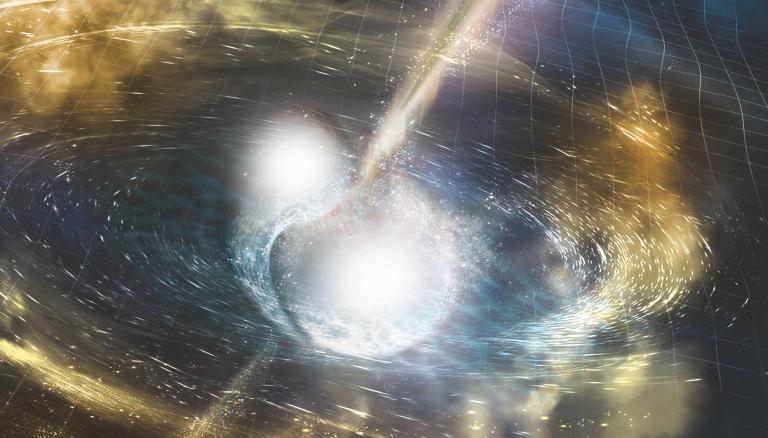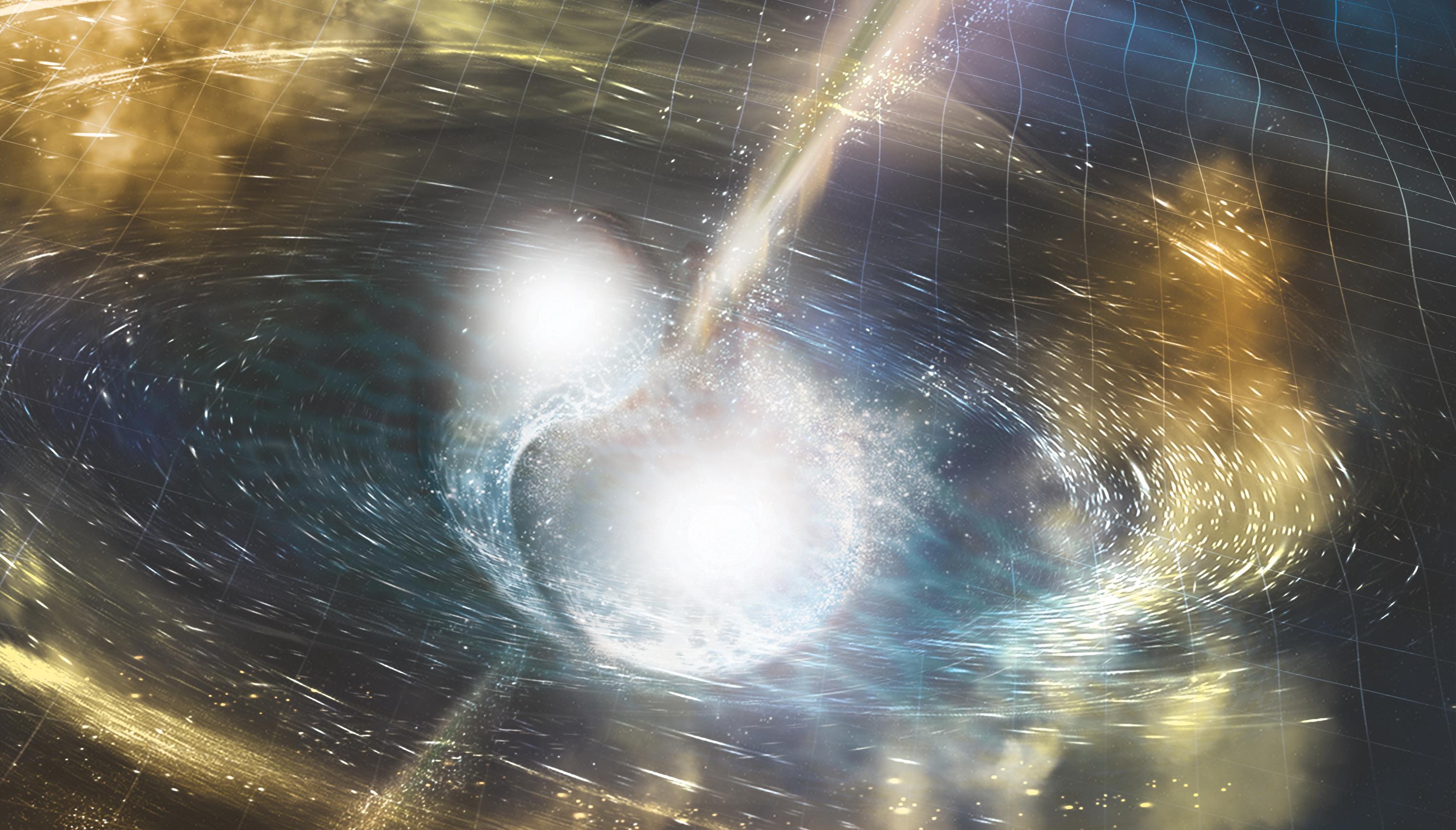Article Main Body
With the detection of the gravitational signal from a neutron star merger – the loudest signal yet – and the observation of electromagnetic counterparts at a range of wavelengths, gravitational wave astrophysics has begun.
On 16 October the LIGO–Virgo collaboration announced the detection of the fifth gravitational wave event, the loudest and closest yet found. This was also the first event inferred to be a binary neutron star merger, and the first for which a global army of astronomical instruments detected electromagnetic counterparts, from the short gamma ray burst picked up 1.7 seconds after the culmination of the gravitational wave chirp, through signals in the the X-ray, ultraviolet, optical, infrared and radio parts of the spectrum. Everything points to a neutron star – neutron star merger in the galaxy NGC4993, some 40Mpc away.
The significance of the event is hard to overstate. The Advanced LIGO detectors picked up a neutron star event involving much smaller mass objects, estimated to have been in the range 0.86–2.26 solar masses, than the binary black hole mergers detected so far. It was also the closest event, as 40Mpc, and so the loudest. But it is the fact that it was a neutron star merger that is deeply significant. Black hole mergers produce bigger black holes which do not emit electromagnetic radiation; neutron stars can merge to form a black hole or a neutron star, but they involve matter that can emit light of all frequencies. The electromagnetic signal of the merger can be picked up. The independent signals from this event – electromagnetic and gravitational – mean that there are two independent sources of data for key observables such as the Hubble constant. Given that it is the Hubble constant that tells us the age of the universe, it's good to have two ways to measure it, even if they produce different answers, as the results from this one event may suggest.
The detection suggests strongly that this neutron star collision event produced the short gamma ray burst (sGRB) detected shortly afterwards by the orbiting Fermi Gamma Ray Burst Monitor. This confirms speculation that such mergers may power sGRBs, although the identification of the progenitors as neutron stars is not certain. Their masses are in the range expected (1.16–1.60 solar masses) and much smaller than the black holes so far detected; they cannot be white dwarfs, because the radius of their mutual orbit decreased to ~100km during the inspired; this is an order of magnitude smaller than that of a typical white dwarf. The gravitational wave signal is also consistent with the sort of tidal effects expected when neutron stars approach merger, but it is possible that the collision involved other compact objects such as quark stars or black holes. The angular momentum axis of the system was inclined at 56° to the line of sight.
The transients observed over a wide spectral range certainly suggest that this merger involved matter. An optical transient in NGC4993 was picked up eleven hours after the chirp, and tracked as it evolved from blue to red light, and into the infrared, fading rapidly and unusually. Different teams used a variety of search strategies to find a transient in the search volume announced by LIGO-Virgo; they converged on a location outside the central region of NGC4993. Photometric and spectral analysis showed that the transient was unlike any seen in the past decade; it was certainly not a coincidental young supernova. It is thought to be a kilonova, characterised in theoretical models by a rapid change from optical to infrared emission and very broad spectral features. X-ray and radio emission were found 9 and 16 days after the event, with both extended and point source X-ray emission; these data are thought to arise form processes around the binary neutron star merger, perhaps in the ejecta.
 Blog
Blog

